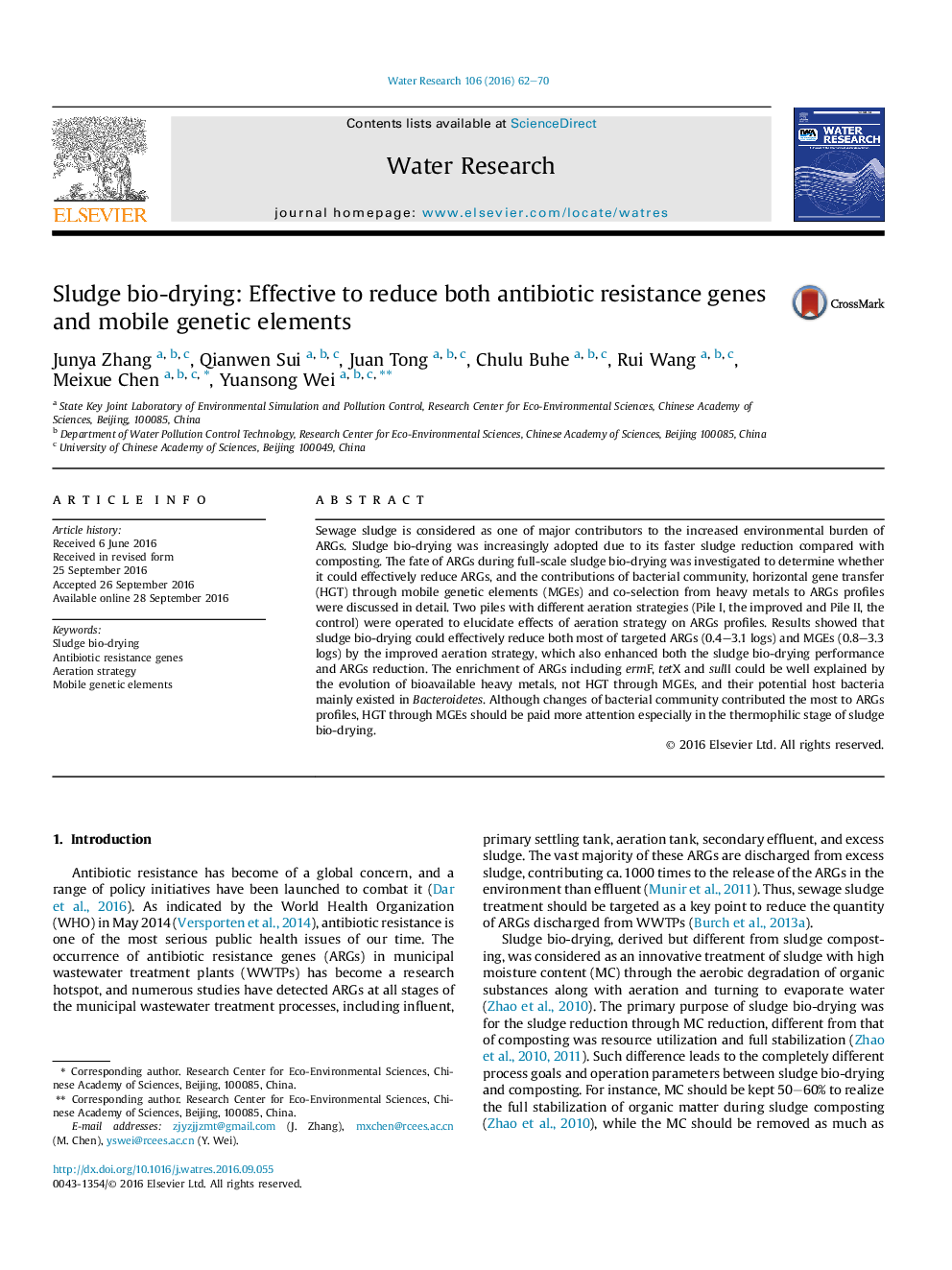| Article ID | Journal | Published Year | Pages | File Type |
|---|---|---|---|---|
| 6364166 | Water Research | 2016 | 9 Pages |
â¢Sludge bio-drying could reduce both ARGs and MGEs quantities and abundance.â¢Improved aeration strategy enhanced both bio-drying effects and ARGs reduction.â¢Evolution of bacterial community contributed the most to ARGs profiles.â¢HGT reduction should be emphasized especially at thermophilic stage.
Sewage sludge is considered as one of major contributors to the increased environmental burden of ARGs. Sludge bio-drying was increasingly adopted due to its faster sludge reduction compared with composting. The fate of ARGs during full-scale sludge bio-drying was investigated to determine whether it could effectively reduce ARGs, and the contributions of bacterial community, horizontal gene transfer (HGT) through mobile genetic elements (MGEs) and co-selection from heavy metals to ARGs profiles were discussed in detail. Two piles with different aeration strategies (Pile I, the improved and Pile II, the control) were operated to elucidate effects of aeration strategy on ARGs profiles. Results showed that sludge bio-drying could effectively reduce both most of targeted ARGs (0.4-3.1 logs) and MGEs (0.8-3.3 logs) by the improved aeration strategy, which also enhanced both the sludge bio-drying performance and ARGs reduction. The enrichment of ARGs including ermF, tetX and sulII could be well explained by the evolution of bioavailable heavy metals, not HGT through MGEs, and their potential host bacteria mainly existed in Bacteroidetes. Although changes of bacterial community contributed the most to ARGs profiles, HGT through MGEs should be paid more attention especially in the thermophilic stage of sludge bio-drying.
Graphical abstractDownload high-res image (262KB)Download full-size image
